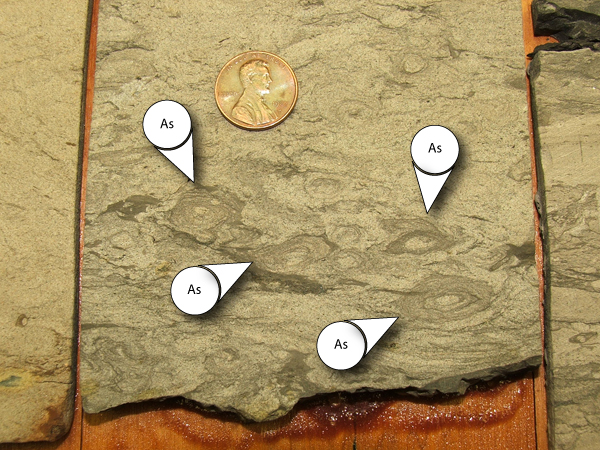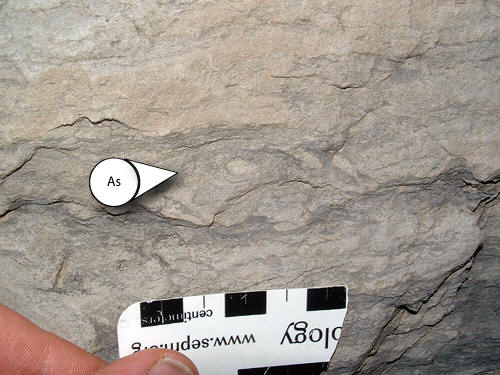
Asterosoma


In this image, several Asterosoma occurrences are identified in bioturbated delta front sandstones. Asterosoma is readily recognized in split cores—the characteristic concentric bands surrounding a central shaft can be seen in this image. Single Asterosoma occurrences can actually be re-deposited Rosselia bulbs which have been torn from the original burrow. The Asterosoma occurrences above are in situ and have not been transported and re-deposited.

Another Asterosoma example from the Panther Tongue sandstone Utah. The trace fossil is found within deltaic shoreface sandstones that contain abundant Scolicia occurrences. Scolicia occurrences and Asterosoma do appear similar at first glance. Scolicia is produced by irregular echinoderms (sea urchins) and lacks a central sand-filled shaft. However, after careful examination, one can see a central burrow surrounded by concentric rings which indicates this is an Asterosoma and not a Scolicia occurrence.
© copyright Chuck D. Howell, Jr. 2001-2022
No part of this website or any information contained may be used or reproduced without written permission from Chuck D. Howell. Figures and information may not be posted on other websites and/or publications. Proper citation is required.